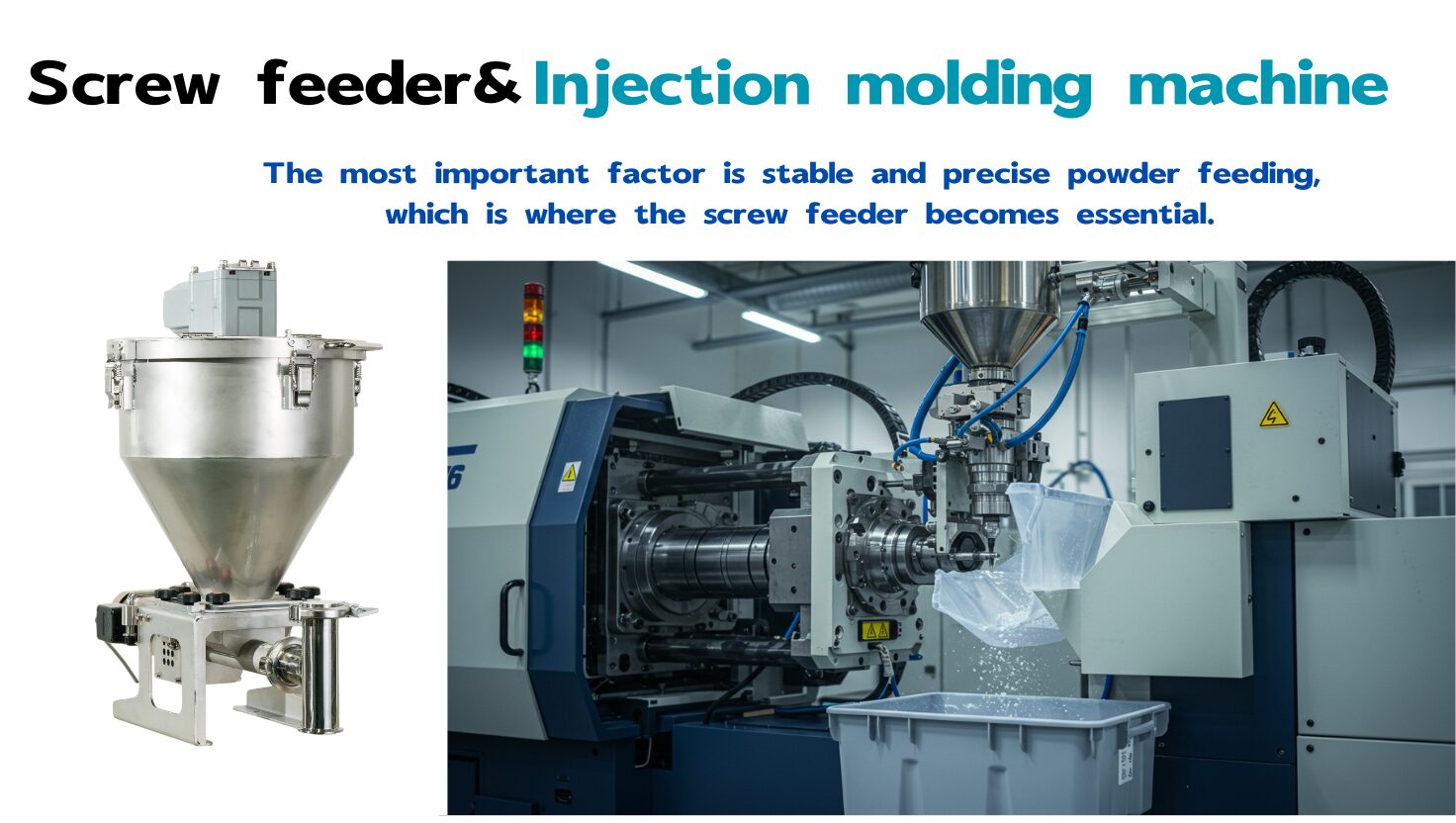The Relationship Between Screw Feeders and Injection Molding Machines
Accurate Powder Feeding Determines Product Quality
In modern plastic manufacturing, the injection molding machine plays a central role. While most molding operations use plastic pellets as the main raw material, recent trends show a growing demand for adding powder materials such as additives and functional fillers. Typical examples include flame retardants, UV absorbers, pigments, glass fibers, and calcium carbonate.
When introducing powders into the molding process, the most important factor is stable and precise feeding, which is where the screw feeder becomes essential. Even slight variations in the amount of additive can greatly affect the performance and quality of the final product.
Powder Feeding Challenges and the Role of Screw Feeders
Unlike pellets, powders do not flow naturally. They often vary in flowability and cohesion, making them difficult to handle. Common problems include bridging, rat-holing, and clumping, all of which can interrupt continuous operation and affect productivity.
A screw feeder solves these problems by transporting powder at a controlled rate using a rotating screw, ensuring accurate and consistent dosing into the injection molding machine. By adjusting the screw design, speed, and incorporating agitators or flow-aid mechanisms in the hopper, the system can handle even difficult powders reliably.

Integration with Injection Molding Machines: A Real-World Example
In one case, an automotive parts manufacturer needed to add calcium carbonate to their base resin. They implemented a screw feeder system that precisely supplied 5 grams of powder per shot, triggered by the signal from the injection molding machine. This eliminated manual handling errors and reduced the number of defective products, leading to improved yield and stable production.
Some systems also include powder level sensors and feedback controls on the feeder side, preventing overfeeding or material shortage during operation.
The Future of Powder Feeding and Its Importance
As the industry shifts toward multi-material processing and greater use of recycled materials, the importance of automated and high-precision powder feeding continues to grow. The combination of a screw feeder with an injection molding machine allows for tight control of powder additives, improving both the flexibility and consistency of molding operations.
Today, the screw feeder is no longer just a feeding device—it has become a critical component for ensuring product quality in high-performance materials processing. Selecting the right feeder design and control method based on the powder characteristics and product requirements will be key to staying competitive in the molding industry.
